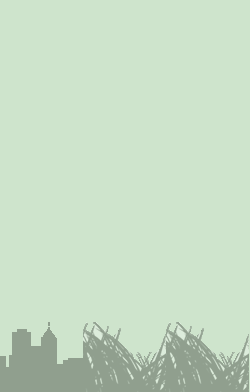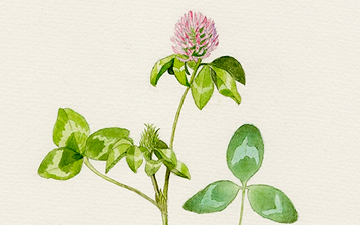Trifolium pratense (Red Clover) is a species of clover, native to Europe, Western Asia and northwest Africa, but planted and naturalised in many other regions.
It is an herbaceous, short lived perennial plant, variable in size, growing to 20–80 cm tall. The leaves are alternate, trifoliate (with three leaflets), each leaflet 15–30 mm long and 8–15 mm broad, green with a characteristic pale crescent in the outer half of the leaf; the petiole is 1–4 cm long, with two basal stipules. The flowers are dark pink with a paler base, 12–15 mm long, produced in a dense inflorescence.
It is widely grown as a fodder crop, valued for its nitrogen fixation, which increases soil fertility. For these reasons it is used as a green manure crop. Several cultivar groups have been selected for agricultural use, mostly derived from var. sativum. It has become naturalised in many temperate areas, including the Americas and Australasia as an escape from cultivation.
Red clover contains isoflavones (estrogen-like compounds) which can mimic the effect of endogenous estrogen. The use of red clover to relieve menopausal symptoms has been shown to be sometimes ineffective, but safe.[1] Traditionally, red clover has been administered to help restore irregular menses and to balance the acid-alkaline level of the vagina to promote conception.[2]
The isoflavones (like irilone and pratensein) from red clover have been used to treat the symptoms of menopause.[3] It has also been reported that red clover has been used for a variety of medicinal purposes, such as bronchitis, burns, cancers, ulcers, sedation, asthma, andsyphilis.[4]
(From Wikipedia, November 14th, 2010)
—
Red Clover is a common plant that occurs in every county of Illinois. It was introduced from Eurasia as a fodder crop for farm animals and as a cover crop to improve agricultural soil. Habitats include fields, pastures, weedy meadows, vacant lots, grassy areas along roads, waste areas, and degraded prairie remnants. This plant occurs in native habitats occasionally, but it is only slightly to moderately aggressive. It is often found in grassy areas that are not subjected to regular mowing.
Red clover may be seeded in pure stands, but it is often mixed with grain or grass. Spring or late summer seedings are satisfactory. It may be overseeded in the spring on fall seeded grasses. Red clover seed should be inoculated. Phosphorus and potash are the fertilizer elements needed mostly by red clover. Apply as recommended by soil tests. Seeding may be done with a drill or broadcast. A firm, weed-free seedbed is essential. Plant seeds ¼ to ½ inch deep.
(From EOL via Illinois Wildflowers, November 14th, 2010)




